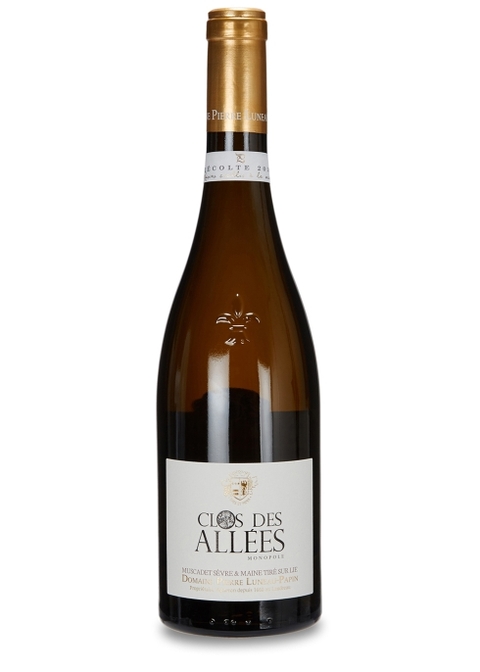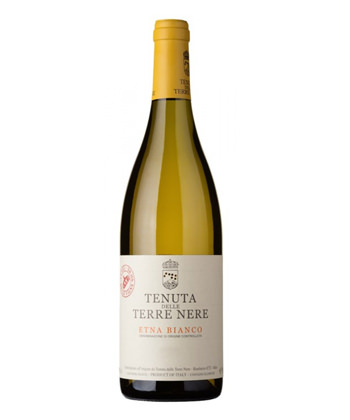You’ve probably heard a wine described as fruity, sweet, tart or bitter. But what about salty?
Wine made with grapes that are grown near the coast often pick up a whiff of sea air and a hint of salinity, translating to mouthwatering food-friendliness with seafood and lots of other dishes.
Go ahead, dive in.

Falanghina
What it is: A white varietal grown on the coast of Campania in Italy.
What’s it like: Sauvignon Blanc or Pinot Grigio fans: add this Italian white to your repertoire. “What I love about Falanghina is that it can often be a gem hidden on a wine list,” notes Jacqueline Pirole, managing partner at Macchialina in Miami Beach. “It is typically known for its minerality and floral notes, along with a freshness on the nose and palate.”
Read this: How to Be Seasonal When Your Seasons Don't Change
Interestingly enough, in ancient times, saltwater was actually added to the wine during fermentation; today it gets any discernible salinity from maritime influence. The best expressions are bursting with acidity, salinity and notes of orange blossom, peach and yellow cherry.
What to pair it with: Crushable on its own, it also goes well with light seafood dishes (think anchovies marinated in lemon and olive oil or branzino baked in salt crust).
Bottles to try:
2016 Montesole Falanghina del Sannio ($18)
2016 Fontanavecchia Taburno Falanghina del Sannio ($20)
Manzanilla Sherry
What it is: A dry, pale fortified fino style of Sherry made with the palomino grape in Sanlúcar de Barrameda in the Jerez region of Spain. It spends time in barrels topped by a layer of yeast that’s called flor, which prevents oxidation.
What’s it like: The cool, seaside location translates to wines that are light and delicate with a salty finish. “Somehow the fresh sea salt notes also seem to greater activate the floral, apple, pronounced chamomile side of fino,” says Max Kuller, wine director and principal of Fat Baby, Inc., which operates several restaurants in Washington, D.C., including Spanish small plates spot Estadio. “Either way, this stuff is amazing. Pure joy, and for me it is Spain’s true native Champagne alternative!”
What to pair it with: Grilled or fried squid, octopus salad, steamed mussels and olives.
Bottles to try:
La Guita NV Palomino Manzanilla-Sanlúcar de Barrameda ($15)
Bodegas Dios Baco S.L. NV Riá Pitá Sherry Manzanilla-Sanlúcar de Barrameda ($12)

Assyrtiko
What it is: A white wine made from grapes of the same name grown in volcanic soil on the Greek island of Santorini.
What’s it like: Assyrtiko is that rare white wine that’s full-bodied with high-acidity. It’s also mineral-driven and decidedly salty, so it can age for years. “The salinity of the wine is reminiscent of the coast...and offers a new option for guests who may be unfamiliar with Greek wine varietals,” says Haunah Klein, head sommelier at Boulud Sud Miami.
What to pair it with: “[It] prepares the palate for the spice and citrus flavors prevalent in Mediterranean cuisine,” says Klein. Serve it with grilled shrimp with fresh herbs or a tomato-based seafood stew.
Bottles to try:
2013 Domaine Sigalas Assyrtiko ($25)
2017 Gaia Wines Thalassitis Assyrtiko ($27)

Muscadet
What it is: A white wine produced in the western end of France’s Loire Valley (the Sèvre-et-Maine or Côtes de Grandlieu appellations) from the Melon de Bourgogne grape.
What’s it like: Muscadet was named for the incorrect notion that the grape tastes “musky.” Actually, wines tout creamy, nutty, notes from contact with the lees, or dead yeast cells, slight sparkle, and flavors of basil and lemon. “The smell reminds me of driving down the road on the way to the beach with the windows down,” says Mike Brewer, executive chef at Copper Vine in New Orleans and a Level 1 Sommelier. “[It] can make you dream of afternoons on the dock of the bay watching the tide roll away [cue the Otis Redding music].”
What to pair it with: This is a no-brainer with oysters on the half shelf. It’s also great with seared scallops and pan-roasted chicken.
Read this: Mixology in the Mother City
Bottles to try:
2015 Lieubeau Château-Thébaud Muscadet Sèvre et Maine ($35)
2016 Domaine Pierre Luneau-Papin Clos des Allées Sur Lie Muscadet Sèvre et Maine ($19)

Etna Bianco
What it is: A white wine from the Italian island of Sicily made from Carricante grapes grown in volcanic soil near Mount Etna.
What’s it like: It picks up “minerality from its volcanic soil, it’s bright acidity due to its high elevation and salinity coming from its proximity to the Mediterranean,” says Jared Gelband, wine director for Italian Village Restaurants in Chicago. Production methods drive the style, he adds. “Finished in stainless steel you will get a crisp and clean style that represents the minerality and fruit a little better, [while] finished in wood will give you a creamier and softer style.”
What to pair it with: The quiche-like Sicilian vegetable pie, seafood lasagna or grilled swordfish.
Bottles to try:
2016 Tenuta delle Terre Nere Bianco ($22)
2016 Le Vigne di Eli Bianco ($22)
Kelly Magyarics, DWS, is a wine, spirits and lifestyle writer, and wine educator, in the Washington, D.C. area. She can be reached through her website, www.kellymagyarics.com, or on Twitter and Instagram @kmagyarics.
